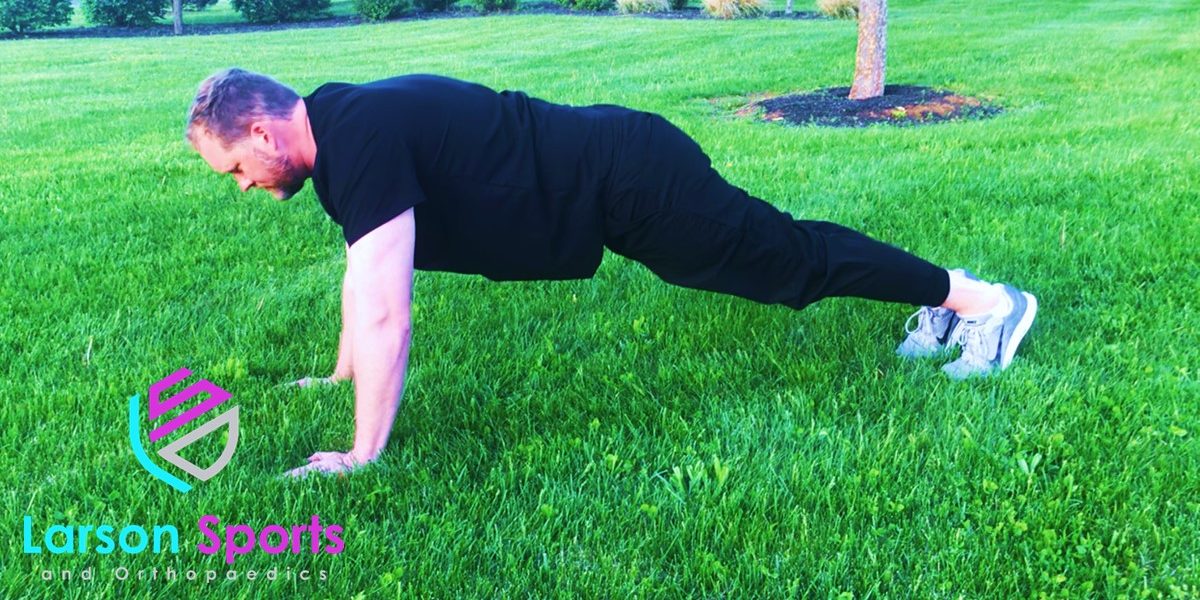We all hate looking bad in front of other people. I understand: none of us want to look like a beached seal in front of a class full of fit, athletic people while struggling to do a push-up. But what if you can’t do a push-up? Or what if you can’t do enough to keep up with the group? Don’t worry! We’ll show you how to get better at push-ups in six simple steps.
Here at LSO, our mission is to help more people move better longer, so I’m going to teach you how to do push-ups like a pro! Whether you are struggling to get that first push-up, or working to get back to speed after an injury, we can help scale you into peak push-up form.
What Is Scaling?
Scaling is how you build up to a difficult exercise by starting with easier versions. Scaling and accessory muscle strengthening are two great ways to progress to achieve your goals in the gym. So here, we will teach you scaling for push-ups.
Scaling can be accomplished by improving your leverage, reducing the resistance, or adding support. You’ll see all of these come into play with the push-up modifications below.
Push-Up Basics
Doing push-ups well starts with proper form. Hand position, shoulder angle, foot stance, and body angles all play a role in proper form and a pain-free push-up.
Start with Good Form
If you are strong but can’t do a push-up, some simple changes to your form may be all that’s needed. Hands should be just below and a little wider than your shoulders, so the space between thumb and palm is directly below the shoulder. Keep your elbows close to the body, not 90 degrees to the side. Keep your abdominal muscles tight, but don’t make your back rounded. And keep your feet about shoulder-width apart to give you a solid base.
Work on Accessory Muscles
A push up involves way more than just your chest and arms. If you are fit but struggle with push-ups, the problem may lie in a weak core or shoulder stabilizers. Without a tight core, trying to do a push-up is lying trying to push a rope, not very effective.
Accessory Muscle Work For Push-Ups
Many people fail at push-ups because their accessory muscles just aren’t as strong as their prime movers. The accessory muscles for push-ups include your core and abdominal muscles, as well as the muscles that stabilize your shoulder blade.
High Plank
If you have stable core control, you’ll find push-ups almost magically get more natural. A great place to start working on your core is the high plank. A high plank will build core control and endurance you need for performing multiple push-ups.
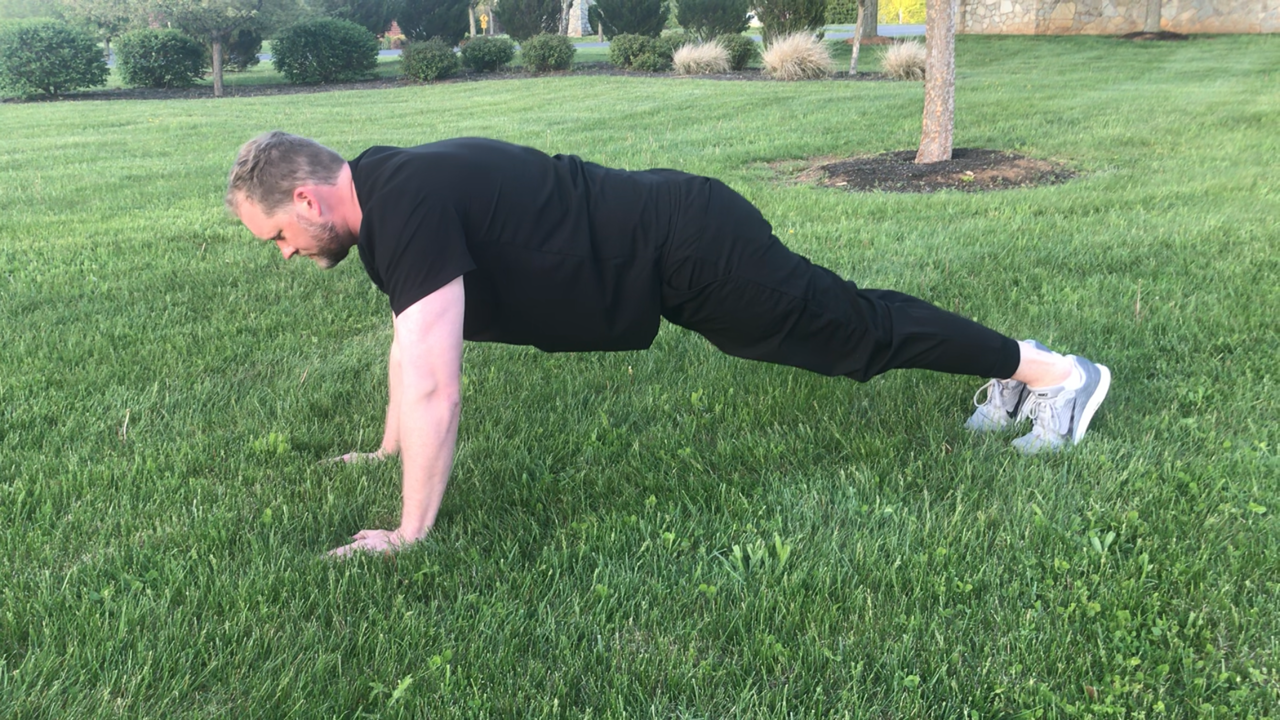
Scapular Push-Ups
This scaled push-up helps to strengthen the muscles that keep your shoulder blades (scapula) stable during push-ups. While keeping the core and elbows tight, you simply push the shoulders forward, and then pinch them back. Seventeen muscles attach to your shoulder blade, and this works them all!
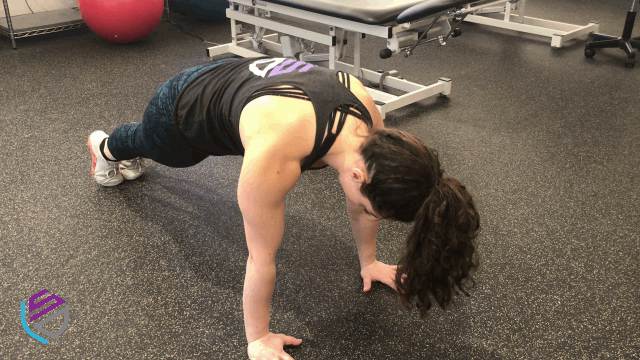
Walking Plank
Once you’ve mastered the high plank, progress to the walking plank. By “stepping” from side to side with your hands, you are forcing your core to keep solid despite a shifting set of forces, called dynamic stability. You are also working the shoulder stabilizers along with the core muscles, which is a progressive step toward doing an actual push-up.
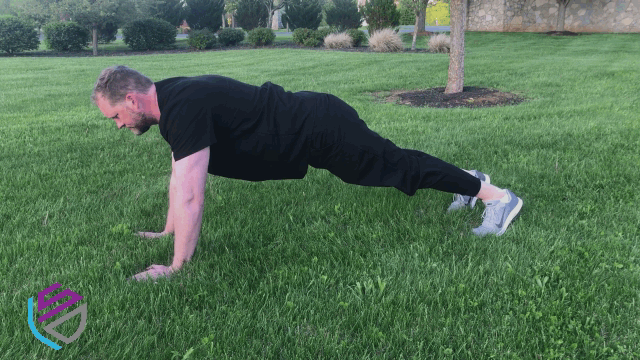

Need More Core Exercises?
Check out FOUR FOR THE CORE to get even more!
Push-Up Progression Exercises
Inclined Push-Ups
Doing a push-up is difficult because it turns your body into a lever that’s working against you. Doing an inclined push-up improves your leverage, so your body feels lighter. And inclined push-ups also allow better activation of your pectoralis muscle, making the movement easier. As you get better at them, you can slowly drop the incline to transition to regular flat push-ups.
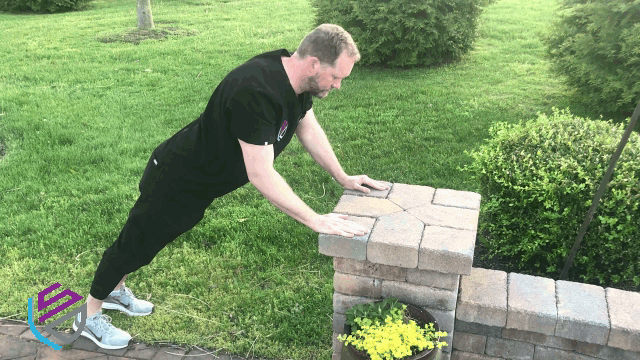
Band-assisted Push-Ups
Band-assisted push-ups are a great intermediate step toward your first real push-up. These keep the standard mechanics and levers of the push-up. And they use all of the same muscles, at the same angles, as a regular push-up. Plus, they give you help at the bottom of the push-up when you need it most. And with so many different elastic bands to use, you can pick exactly how much help you need, and scale down over time. Many gyms already have resistance bands that you can use. If not, you can check out the prices below.

Eccentric Push-Ups
Eccentric exercises are excellent strength builders but often overlooked in standard training programs. Eccentric push-ups are where you are slowly lowering yourself from the starting plank position to the ground. And then you get back up into the starting position however you can. You are still working the same muscles as a regular push-up. And you will build strength to help with both the up AND down of a push-up.
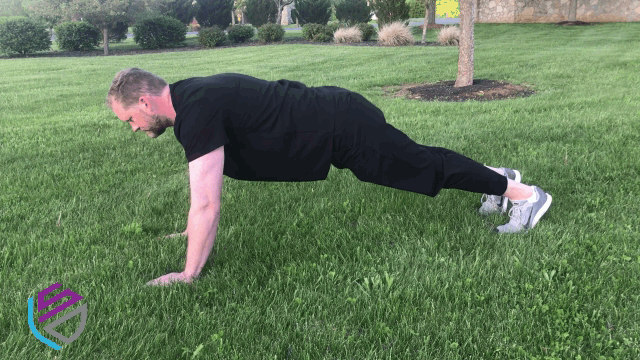

Feeling Sore?
There are many natural supplements that can prevent and relieve the muscle aches and stiffness after eccentric exercise. Read about them here: Natural DOMS Relief
Pushups from knees
I see these on sooooo many other blogs. I gotta say: they are fine, but not the best. Kneeling pushups mainly help reduce the core control needed for push-ups. If you fix your core control with some of the exercises above, it will improve your push-ups rapidly. Don’t avoid your deficiency, attack it directly!
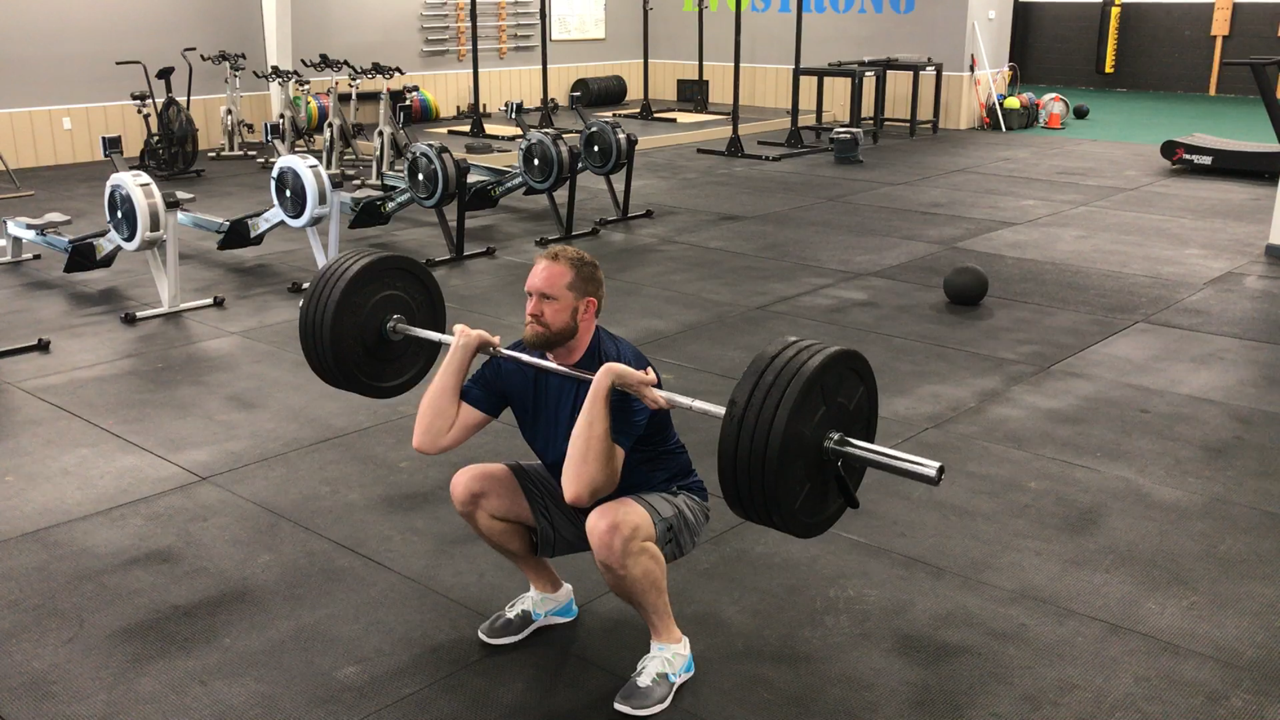
Dr. James Larson is an orthopedic surgeon specializing in sports medicine and arthroscopic surgery. He also holds a CF-L1 certificate and is a Certified BFR Specialist. He supports weight training and high-intensity exercise throughout the lifespan. He started LSO to keep more people moving better, longer.

